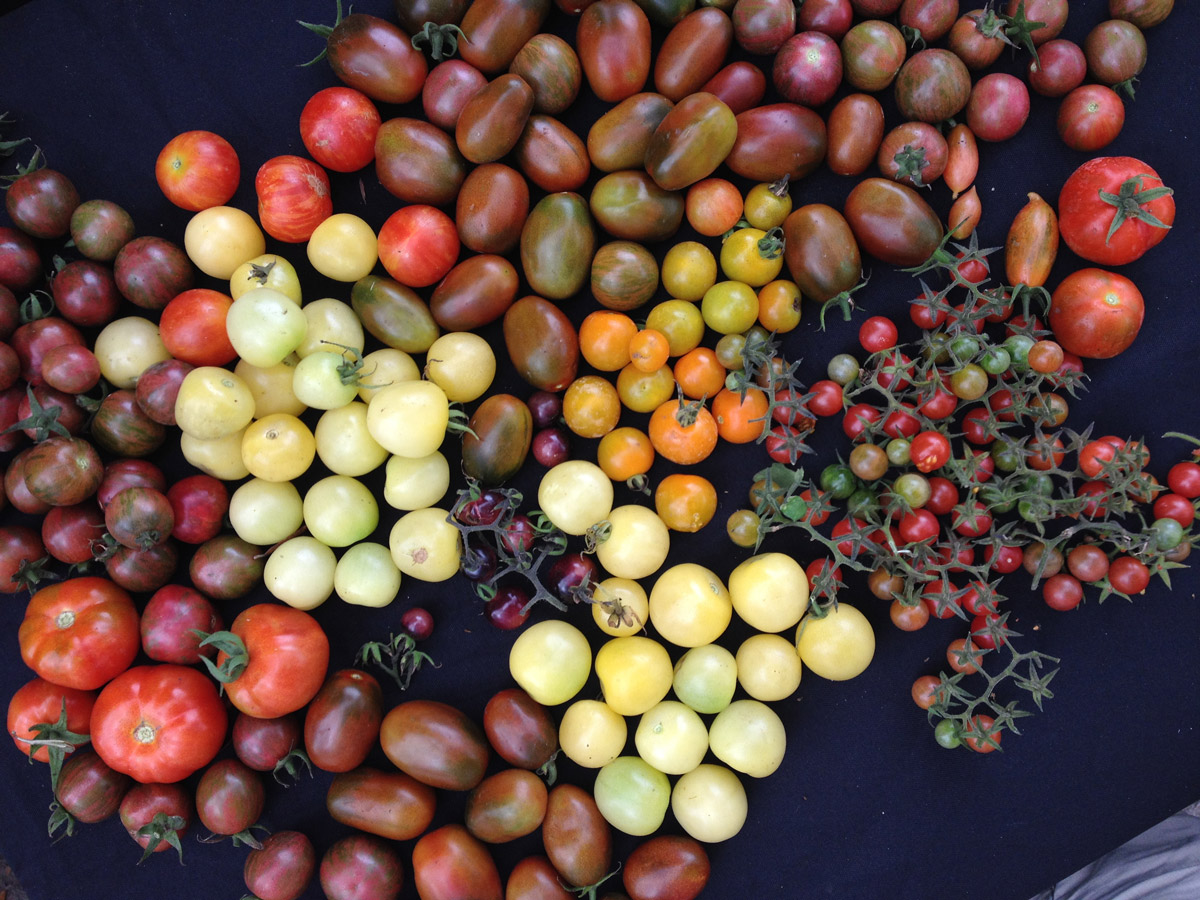Secrets to Growing Tomatoes Successfully
Beginning gardeners often try growing tomatoes ... and then get discouraged by poor results. Improve your chances with these tips.
TIMING
Don’t plant the wrong time of the year. Basic gardening books written for northern climates advise planting veggies in the spring, but in South Florida this is wrong. Most tomatoes need cooler weather to set fruit. The UF Extension recommends planting in August at the earliest and February at the latest. In my opinion, tomatoes are best planted from September to January to allow for enough cool weather for a full season.
SEEDS OR SEEDLINGS?
Tomatoes start off fairly slowly. It takes a while for them to get established. Starting from seedlings generally gives you a one- to two-month head start on a tomato crop. Seedlings will be more tolerant of irregular watering and more able to compete with weeds. If you want to grow from seeds rather than a seedling from a friend or nursery, plant them in a potting mix with protection from hard rain.
SIZE MATTERS
Generally, smaller tomatoes are easier to grow than larger tomatoes. Larger tomatoes typically need cooler temperatures than small tomatoes for the flowers to set fruit, while many cherry and grape tomatoes are able to make fruit into the summer. Larger tomatoes also require more time for the fruit to develop, and don’t make as many fruit, so there’s greater risk for losing them to birds, caterpillars and rot.
When you look at specific tomato varieties, you’ll see them labeled as “determinate” or “indeterminate.” Most varieties grown commercially are considered determinate, which means the plant produces its fruit all at once instead of gradually, making them easier to harvest. Determinate varieties also don’t require much trellising due to their bushing rather than vining growth habits. Indeterminate varieties make sense for farmers or gardeners who prefer a gradual harvest over a longer period, especially when the harvest is for local consumption. Many of the tastiest varieties – many of which are heirloom – are indeterminate.
IN GROUND OR CONTAINERS?
This depends on available space and materials. Use pots that are at least 5 gallons for each plant, 10-15 gallons for higher yields. Use a rich, well-draining potting mix with at least one drainage hole plus gravel or small rocks on the bottom. In the ground, plants will be able to extend their roots more, leading to larger plants and yields, especially with indeterminate varieties. For optimum growth, space plants 2-4' apart. Soil should be well draining and have ample fertility.
MORE GROWING TIPS
Provide full sun, ideally over 10 hours of direct light, for large plants and bigger yields. If not trellised and pruned, plants will become wild vines on the ground, creating a greater risk of bacterial infection, insects and rot. It’s often difficult to find fruit when it’s ready to pick. With tomato plants that don’t get too large, a single stake or cage can be enough to support the plant. Trellis materials can include bamboo, fences, netting and string. Many tomatoes can grow over 10 feet, so are somewhat limited to the size of their trellis.
There are varying opinions as to how much to prune. Generally, the more tomatoes are pruned, the more light they receive and the more the plant will be encouraged to grow off of the ground, leading to higher quality fruiting and easier harvesting. I recommend mostly pruning around the bottom of the plant, eventually removing most or all leaves and branches 1-2' from the base of the plant. This also encourages better air circulation and will lead to less sickness and pests, especially whitefly. I recommend tying and pruning tomato plants at least every two weeks.
Tomatoes like water, but not too much, especially on their leaves. Keep the soil around tomato plants moist but not muddy. Water the soil around the base of the stem rather than on the fruit and the leaves. Water in the morning to allow the sunlight to help with drying. Too much water on the leaves and fruit can lead to increased diseases and problems from fungus and bacteria.
Apply a fertilizer high in nitrogen at the beginning. Once the plant is large enough to hold fruit, reduce or eliminate nitrogen and give extra phosphorous to encourage flowering and fruiting.
The main pests are caterpillars (mostly hornworms), whitefly and mites. I only use organic methods of pest control. For caterpillars and worms, other than removing manually by hand, we use an organic bacteria-based pesticide called BT. Diatomaceous earth can also be applied with a duster. For whitefly and mites, prune and trellis to encourage good circulation and spray with insecticidal soap.
Don’t wait for perfect ripeness. Instead, harvest when the fruit begin to change color. This leads to greater production, less splitting, rotting and loss to pests. Tomatoes will ripen fine a day or two later.
Have an edible gardening question? Email Dylan.





